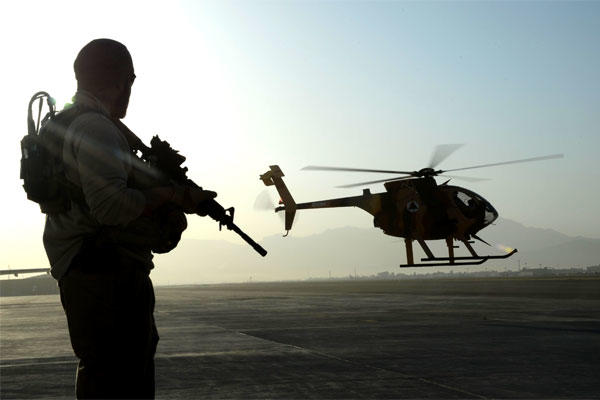As the Afghan Air Force gets equipped with new fleets of rotary-wing and fixed-wing aircraft, American-run aviation school houses managed by industry giant Raytheon are preparing to graduate their largest classes of Afghan aviators to date.
The U.S. formally marked the end of combat in Afghanistan in 2014, but efforts to equip and mentor Afghan armed forces continue as they battle internal threats from Islamic State-connected insurgents.
Among these efforts is a pilot training program for Afghan officers that takes place in two locations outside the country, said Trent Morrow, a business development executive at Raytheon.
Funded by the $11.2 billion Warfighter FOCUS contract with the U.S. Army, these school houses, in the United Arab Emirates and the Czech Republic, began operating in 2010 but are reaching full capacity now.
"This is the first full-scale program of both the Czech schoolhouse and the UAE," Morrow told Military.com during an interview at the Farnborough International Air Show in England in July. "Just now, we're hitting stride."
To date, 87 Afghan officers have graduated from both school houses, he said. Now, 111 students are in various training phases at both locations, with another 125 scheduled to enter by the end of the year. The schools offer both fixed-wing and rotary-wing aircraft instruction, taught by American instructors on commercial training aircraft.
The courses begin with English language training that emphasizes technical terminology, as English is the international language of aviation, Morrow said.
"In most cases, [the officers] have to learn some of the technical English in order to function, to get through just flying an aircraft," Morrow said. "And then we progress through the general skills up through what it takes for them to graduate both rotary-wing and fixed-wing training."
The majority of the students have had no previous flight time, Morrow said. Requirements are determined by the Afghan Air Force, as are the candidates sent to the school houses. On average, he said, officers spend between nine and 10 months in training before returning to the force.
Training continues at the schools as the fledgling air force makes historic strides. In April, U.S. officials said Afghan pilots trained in the U.S. had conducted their first-ever fixed-wing close air support missions, flying A-29 Super Tucano attack aircraft purchased under a U.S. contract. In all, the Afghan Air Force will receive 20 A-29s by 2018.
And just this month, the Afghan Air Force took delivery of four new MD-530 Cayuse Warrior helicopters, military officials said, bringing the total fleet number to 27 and giving the force the ability to fire rockets or .50-caliber machine guns.
Morrow said training will continue in coming years as the force becomes further established.
"It's working towards the Afghan Air Force's building capacity and their ultimate end goal of having the ability to do all this, in a modern sense, so they can integrate with allied forces and perform their missions," he said.
-- Hope Hodge Seck can be reached at hope.seck@military.com. Follow her on Twitter at@HopeSeck.
Related Video:





























